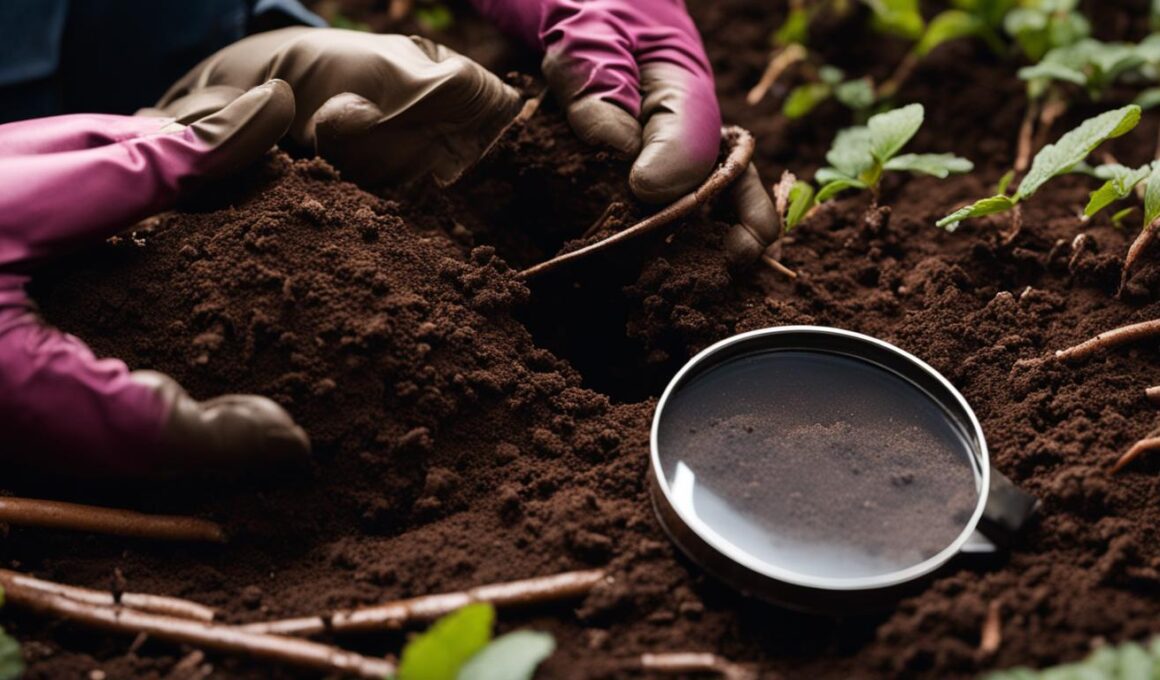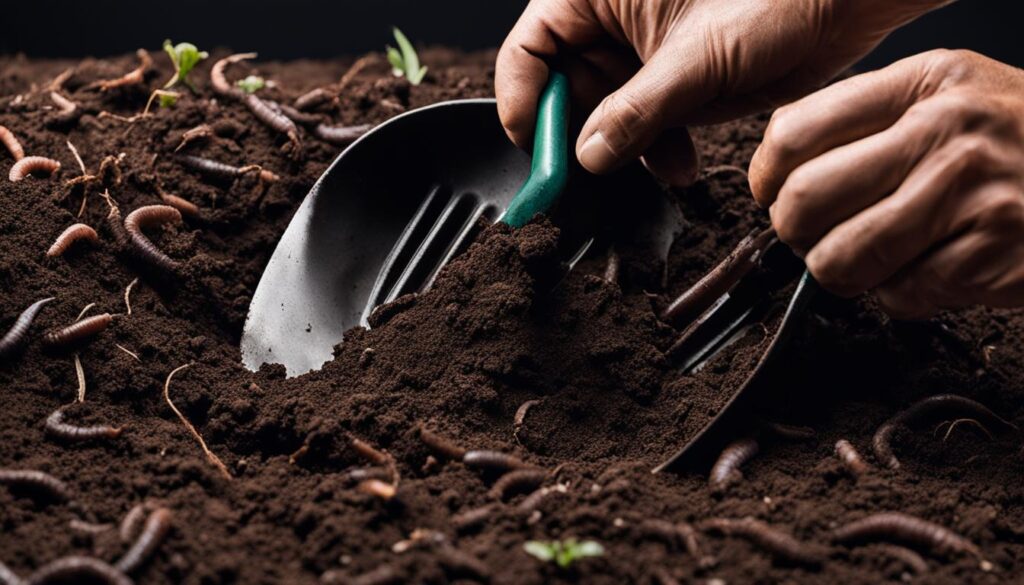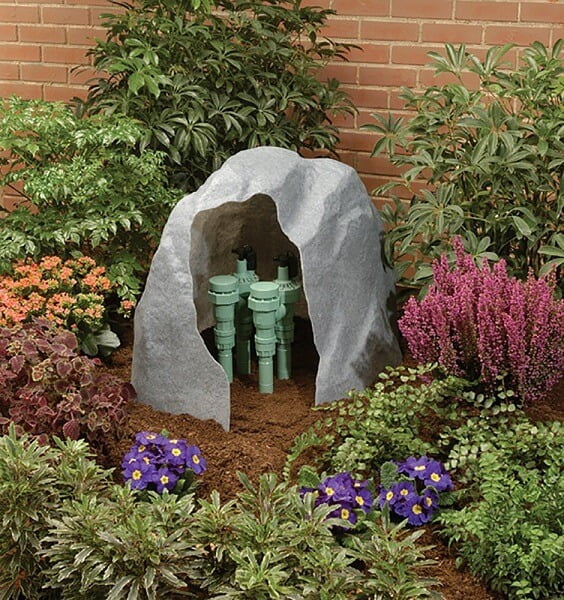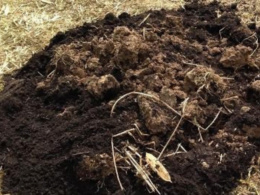Are you dealing with earthworms in your home? We understand the frustration and are here to help. In this guide, we’ll explain why these creatures may find their way into your house and provide you with safe and effective methods to remove them. Whether you’re an avid gardener or simply want to maintain a worm-free living space, read on to discover the best practices for dealing with earthworms.
Post Summary
- Earthworms can enter your home during heavy rain and through cracks or drains in your foundation.
- To remove earthworms from your home, scoop them up and release them back into your garden.
- Clean the infested areas using eco-friendly cleaners like vinegar and baking soda or chlorine-free bleach.
- Prevent future infestations by coating pipes and drains with petroleum jelly and maintaining cleanliness in your home.
- Remember that earthworms play a vital role in soil health, so consider their benefits when gardening.
Why are Earthworms in Your Home?
Earthworms are primarily known for their presence in soil, playing a crucial role in enhancing soil health. However, it’s not uncommon to find these elusive creatures making their way into your home, particularly during heavy rainfall when the ground becomes saturated with water. If your house has a slab or partial slab foundation, earthworms may find their way in through drains or cracks, seeking refuge from the excess moisture.
One of the common areas where earthworms are often found in homes is the basement. Basements tend to have higher humidity levels and may provide the earthworms with the damp environment they prefer. Additionally, earthworms can also end up in bathrooms, especially if there are drain openings or plumbing issues that allow them access.
While the presence of earthworms in your home may be startling, it’s important to remember that they are harmless and are simply seeking a temporary shelter. However, if you would prefer to keep them out of your living space, there are measures you can take to prevent their entry and ensure their safe removal.
Preventing Earthworm Entry into Your Home
- Regularly inspect and seal any cracks or openings in your foundation, walls, or around drainage pipes to prevent earthworms from entering.
- Install screens or covers on drains to prevent earthworms from crawling up through the pipes.
- Ensure proper drainage around your home to prevent water from pooling near the foundation, which can attract earthworms.
By implementing these preventive measures, you can minimize the chances of earthworms finding their way into your home and help maintain a harmonious living environment.
Quote
You may find earthworms in your home during heavy rainfall when the soil becomes saturated. It’s important to understand that they are harmless and can easily be removed and returned to the outdoor environment.
Common Entry Points for Earthworms in Homes
| Location | Possible Entry Points |
|---|---|
| Basement | Cracks in walls or floor, gaps around utility lines or pipes |
| Bathroom | Drain openings, plumbing issues |
Understanding why earthworms may enter your home is the first step in effectively managing their presence. By implementing preventive measures and ensuring their safe removal, you can maintain a comfortable living environment while appreciating the significant role these creatures play in our ecosystem.
| Steps to Get Rid of Earthworms in Your Home |
|---|
| Scoop them up and bring them outside |
| Thoroughly clean the infested area using eco-friendly cleaners |
| Prevent future infestations by coating pipes and drains with petroleum jelly |
The Benefits of Earthworms in Soil
Earthworms are not just creatures that inhabit the soil; they play a crucial role in maintaining soil productivity and health. Their activities have numerous benefits for the soil ecosystem, which ultimately leads to better plant growth and a healthier garden. Let’s explore some of the key benefits of earthworms in soil:
Enhanced Water Infiltration
One of the primary benefits of earthworms in soil is their ability to enhance water infiltration. As they burrow through the soil, they create channels and tunnels that allow water to penetrate deeper into the ground. This improves the overall water-holding capacity of the soil and helps prevent waterlogging, which can be detrimental to plant roots.
Improved Soil Aeration
Earthworms are natural aerators of the soil. As they move through the soil, they loosen and mix it, creating air pockets in the process. This improves soil structure and allows oxygen to reach plant roots more easily. Adequate soil aeration is essential for root respiration and nutrient uptake, promoting healthy plant growth.
Reduction of Soil Compaction
Soil compaction can be a significant issue in many gardens, leading to poor drainage and restricted root growth. Earthworms help alleviate soil compaction by their continual burrowing activities. Their movements loosen compacted soil, increasing its porosity and preventing compaction from occurring in the first place.
Enhanced Soil Organic Matter
Earthworms are voracious eaters of organic matter such as dead leaves, grass clippings, and plant debris. They consume this organic material and break it down into smaller particles through digestion. As a result, earthworms contribute to the breakdown of organic matter in the soil, speeding up the decomposition process. This, in turn, increases the availability of nutrients for plants and improves overall soil fertility.
| Benefit | Description |
|---|---|
| Enhanced Water Infiltration | Earthworms create channels and tunnels that improve water penetration into the soil. |
| Improved Soil Aeration | Earthworms loosen the soil, creating air pockets that allow oxygen to reach plant roots. |
| Reduction of Soil Compaction | Earthworms alleviate soil compaction by constantly burrowing through the soil. |
| Enhanced Soil Organic Matter | Earthworms consume and break down organic matter, increasing nutrient availability. |
Types of Earthworms and Their Biology
Earthworms are fascinating creatures that play a vital role in soil health. There are three main types of earthworms: litter dwellers, topsoil dwellers, and subsoil dwellers. Each type has its own characteristics and functions within the ecosystem.
Litter Dwellers
Litter dwellers, as the name suggests, reside in the leaf litter layer on the surface of the soil. They primarily feed on decaying organic matter such as leaves and plant debris. These earthworms help break down the litter, accelerating the decomposition process. Their presence enhances nutrient cycling and enriches the soil with organic material.
Topsoil Dwellers
Topsoil dwellers, also known as epigeic earthworms, inhabit the upper layers of the soil. They create burrows and feed on a combination of organic matter and mineral soil. These earthworms are often found in compost piles and manure heaps, where they contribute to the decomposition of organic material. Their burrowing activities improve soil structure, allowing for better water infiltration and aeration.
Subsoil Dwellers
Subsoil dwellers, or anecic earthworms, live in the deeper layers of the soil. They create vertical burrows that can extend several feet into the ground. These earthworms feed on organic matter on the soil surface and bring it down into their burrows, mixing it with the subsoil. This process, known as bioturbation, helps to improve the distribution of organic matter and minerals throughout the soil profile.
Earthworms are hermaphrodites, meaning they have both male and female reproductive organs. They reproduce by exchanging sperm during a mating process. After mating, each earthworm produces a cocoon that contains eggs. The cocoon is deposited in the soil, where it incubates until the young earthworms hatch. The rate of reproduction and development varies depending on environmental conditions such as temperature and moisture levels.
In addition to their role in soil health, earthworms can also have significant environmental effects. Their burrowing activities improve soil drainage and reduce the risk of compaction. By enhancing soil structure and nutrient cycling, earthworms contribute to the overall productivity and fertility of agricultural and garden soils.
| Type of Earthworm | Habitat | Feeding Habits | Role in Soil Health |
|---|---|---|---|
| Litter Dwellers | Leaf litter layer | Feed on decaying organic matter | Accelerate decomposition, enrich soil with organic material |
| Topsoil Dwellers | Upper layers of soil | Feed on organic matter and mineral soil | Improve soil structure, enhance water infiltration and aeration |
| Subsoil Dwellers | Deeper layers of soil | Feed on surface organic matter, mix it with subsoil | Improve distribution of organic matter and minerals |
Conclusion
In conclusion, understanding why earthworms may enter your home and taking steps to safely remove them is crucial. While finding earthworms in your living space can be alarming, it’s best to scoop them up and relocate them to your garden. Remember to clean the infested area thoroughly using eco-friendly cleaners like vinegar and baking soda or chlorine-free bleach. Pay extra attention to drains and toilets in the bathroom, as earthworms may be present there too. To prevent future infestations, coat pipes and drains with petroleum jelly and maintain cleanliness in your home.
However, it’s essential to recognize the significant benefits of earthworms in maintaining soil health. These incredible creatures help improve water infiltration, soil aeration, soil aggregation, and the breakdown of organic matter. They also contribute to the availability of plant nutrients, resulting in a healthier gardening environment. So, when you’re working in your garden, keep in mind the importance of promoting earthworm well-being and their positive impact on your soil.
By following the tips provided in this guide, you can effectively manage earthworms and create a thriving gardening ecosystem. Remember, earthworm removal is essential for a clean living space, but it’s equally important to maintain a balance that supports soil fertility. So, embrace the valuable role earthworms play and implement these gardening tips to foster a healthy and vibrant garden.
FAQ
Why do earthworms enter homes?
Earthworms can find their way into your home during heavy rain when the soil becomes saturated. If your house has a slab or partial slab foundation, they may be able to enter through drains or cracks.
How do I remove earthworms from my home?
If you find earthworms in your home, it’s best to scoop them up and bring them outside to your garden. Next, thoroughly clean the infested area using eco-friendly cleaners like vinegar and baking soda or chlorine-free bleach. In the bathroom, pay extra attention to drains and toilets. Prevent future infestations by coating pipes and drains with petroleum jelly and maintaining cleanliness in your home.
What benefits do earthworms provide to soil?
Earthworms play a crucial role in maintaining soil productivity. They improve water infiltration, soil aeration, and soil aggregation. They also contribute to the breakdown of organic matter and increase the availability of plant nutrients.
What are the different types of earthworms and their biology?
There are three main types of earthworms: litter dwellers, topsoil dwellers, and subsoil dwellers. Earthworms have a complex biology and reproductive system. Their survival and activity are influenced by factors such as moisture, temperature, pH, soil texture, and food supply.
What Are the Best Methods for Removing Earthworms from Soil in a Garden Setting?
When it comes to controlling earthworms in garden soil, there are a few effective methods to consider. One option is using a mixture of coffee grounds and citrus peels, as the acidity can deter earthworms. Another approach is to use a natural nematode called Phasmarhabditis hermaphrodita, which can help reduce earthworm populations. Additionally, avoiding overwatering can discourage earthworms from staying in the soil.










